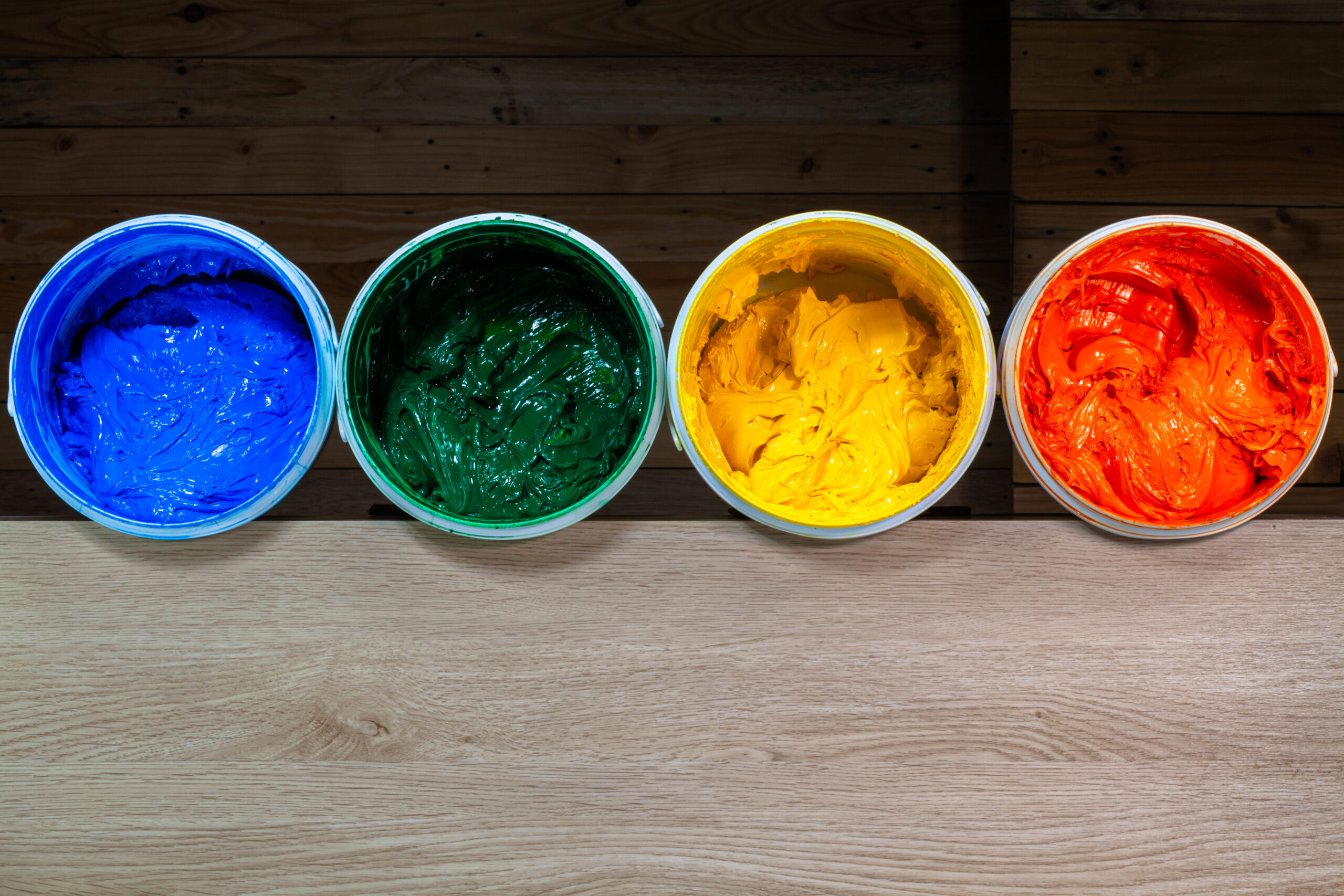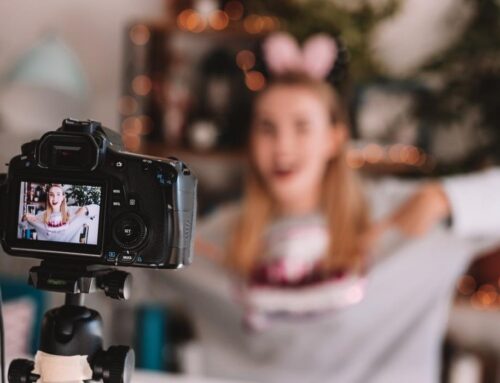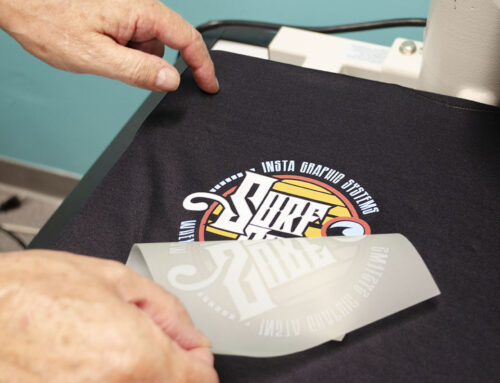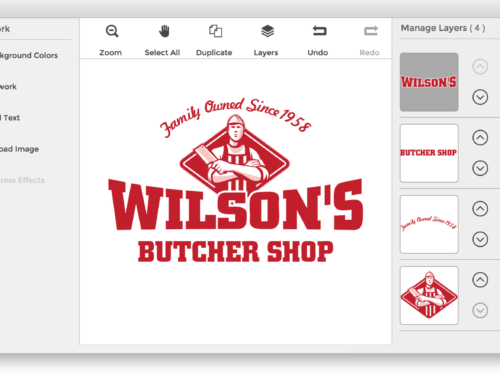Choosing the right ink colors is not as black and white as you may think (pun intended). When engaging in this important task, you must consider color theory, contrast, t-shirt, and ink combination, as well as cost. If done correctly, your brand can benefit from higher sales and improved brand visibility.
We are going to walk you through choosing the right ink colors with the following tips and tricks.
Color Theory
Using color theory to help with your t-shirt design is a great place to start. There are four basic types of color scheme: monochromatic, analogous, complementary, and triadic. Each can help set the tone for your design and influence your ink choices.
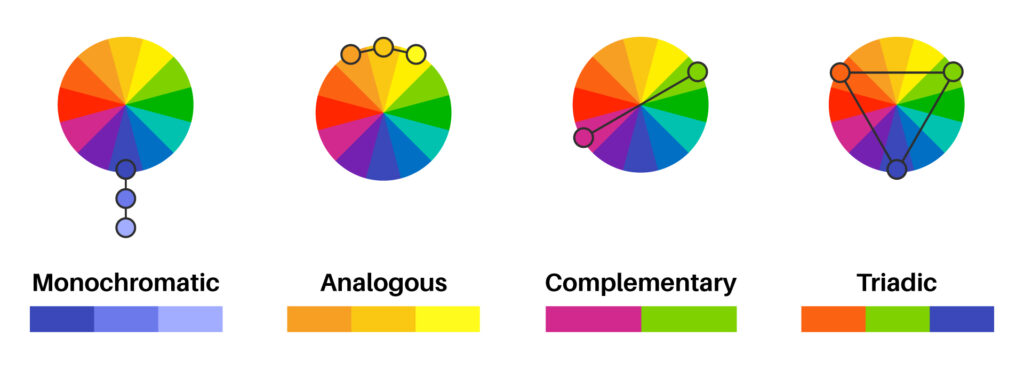
- Monochromatic Colors: These share the same base color, but differ in saturation and brightness. This is a good choice when designing a simple, subtle piece of apparel.
- Analogous Colors: These are adjacent colors on the color wheel, oftentimes located in the same quarter of the color wheel. Printing with analogous colors allows for a non-dramatic, low-key design, but offers a slightly more advanced pop of color than monochromatic colors do.
- Complementary Colors: These colors are located on opposite sides of the color wheel. Although they stand out against one another, they work well together and “complement” one another (hence the name).
- Triadic Color: This scheme utilizes three colors that are equidistant from each other on the color wheel. This color choice can add a range of colors to your design, but still, look nice together. Balancing several colors in one design takes effort, but using this technique will ensure that the colors are harmonious.
Contrast
Another important consideration when choosing ink color is print contrast. Contrast is the visual difference between the darkest and lightest areas of the print. If a print has low contrast, the design will be more subtle but might be illegible. If the print has high contrast, it will be bolder and legible, but might not offer the desired aesthetic if the goal is for a subtle design.
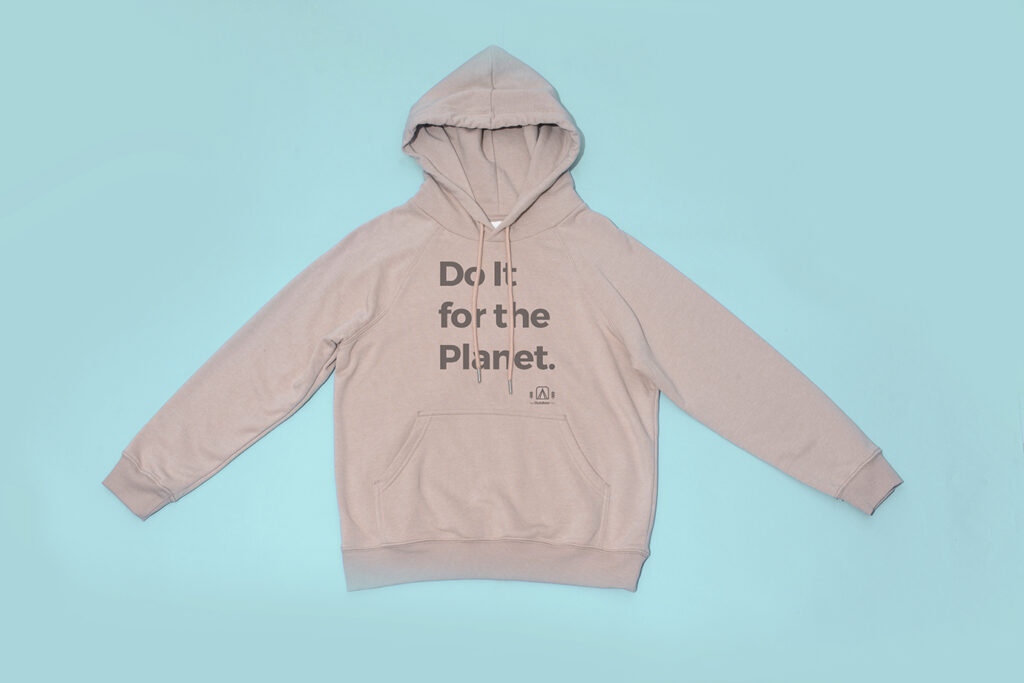
Choosing a Garment and Ink Color Combination
T-shirt color choice is an important element when deciding on an ink combination. Solid, non-blended shirts work well with halftones; whereas, solid prints work well on blended (heathered) shirts. If you print halftones on a heathered shirt, the print may get lost in the textured appearance of the shirt.
Not sure where to start? Consider these tried and true color combinations:
Tried and True Combinations:
- Darker or lighter than the same shade of shirt (i.e. a light blue print on a navy shirt)
- Black and White
- Red, White, and Blue
Surprising Combinations that Work Well:
- Olive and Gold
- Orange and Blue
- Forest Green and Light Pink
- Red and Yellow
- Beige and Maroon
- Red, Blue, and Yellow
- Black and Grey
- Yellow and Off-White
- Two different shades of green (i.e. a mint green print on a forest green shirt)
Color Combinations to Avoid:
- Pastel colors on lighter colored shirts
- Cardinal, maroon, and forest with light colors (as they can end up looking dull or brown once printed)
Cost
Using a lot of color can look great, but it can also bump up the cost of printing. If you want to save money, but still want that extra color, consider limiting your ink choices, but printing on a colored shirt. It can give you that pop without the hefty price tag.
Another trick is to use halftones, which can add depth to your design while only using one ink color.
You can also use the color of your shirt as part of the design. For example, if you print a bumblebee on a green shirt, you would need black, white, and yellow inks. However, on a yellow shirt, you would only need black and white inks; just allow the yellow of the shirt to show through where you would normally use yellow ink.
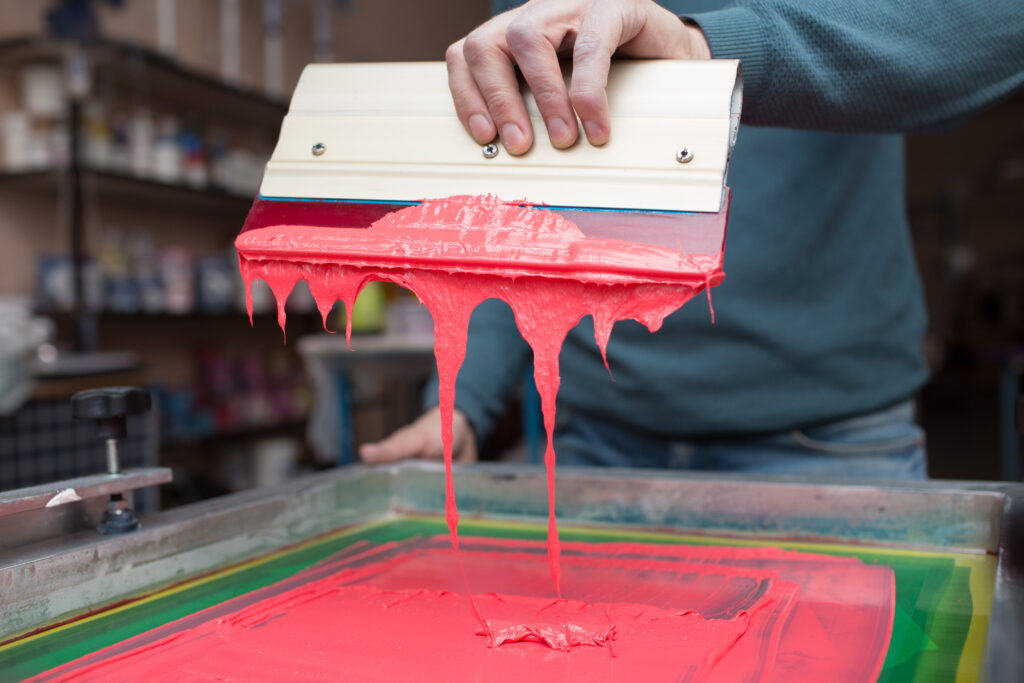
Time to Print
Now, it’s time to see your design brought to life! As one of the best t-shirt screen printing companies in Philadelphia, Press & Release Printing can help with everything from design to mock-ups to printing. Contact Us today to learn more about our Philly printing company.
